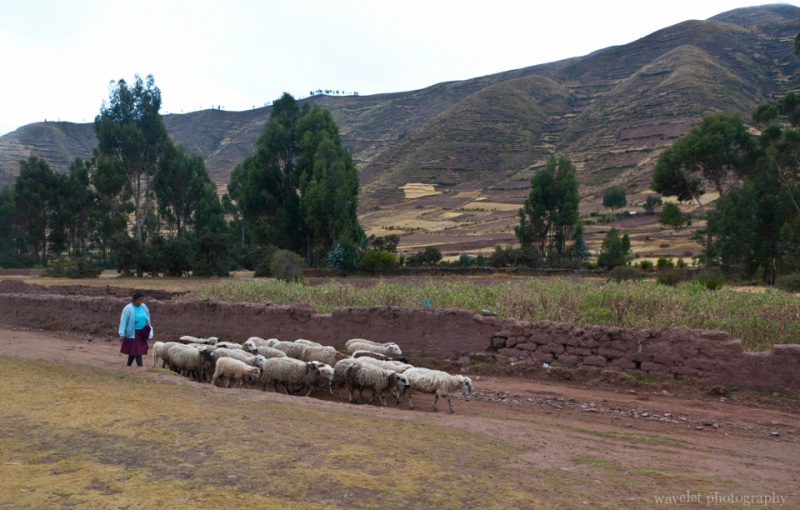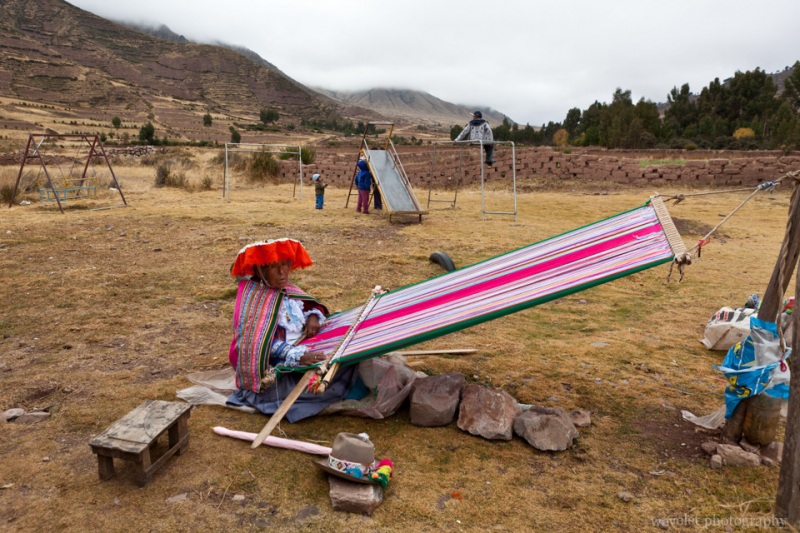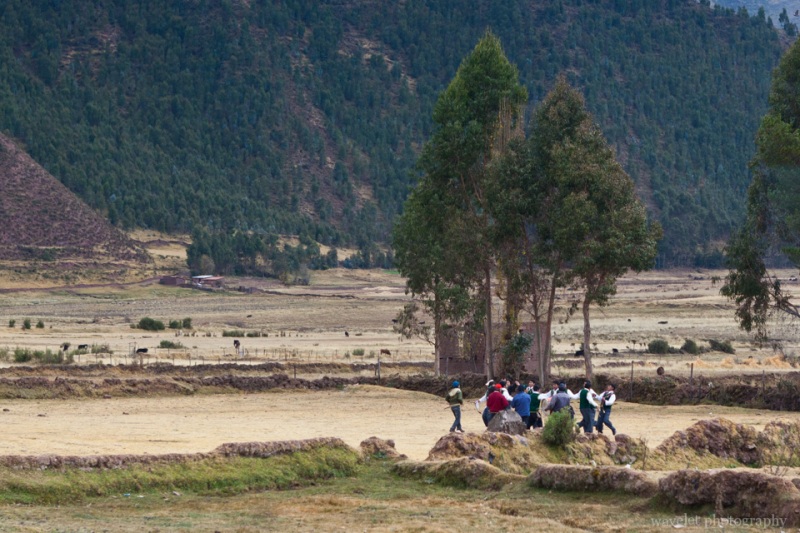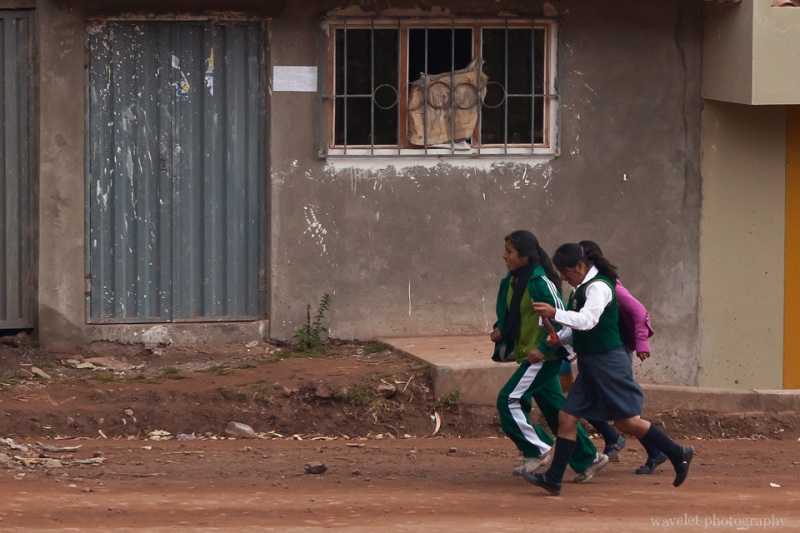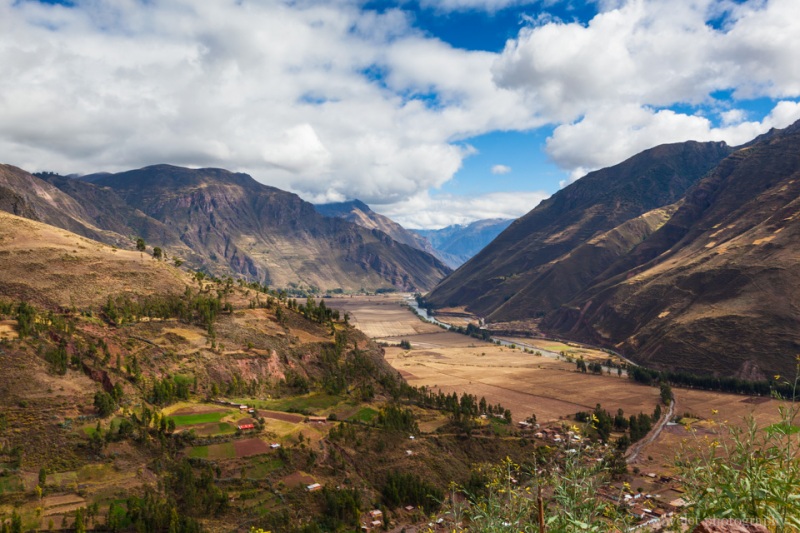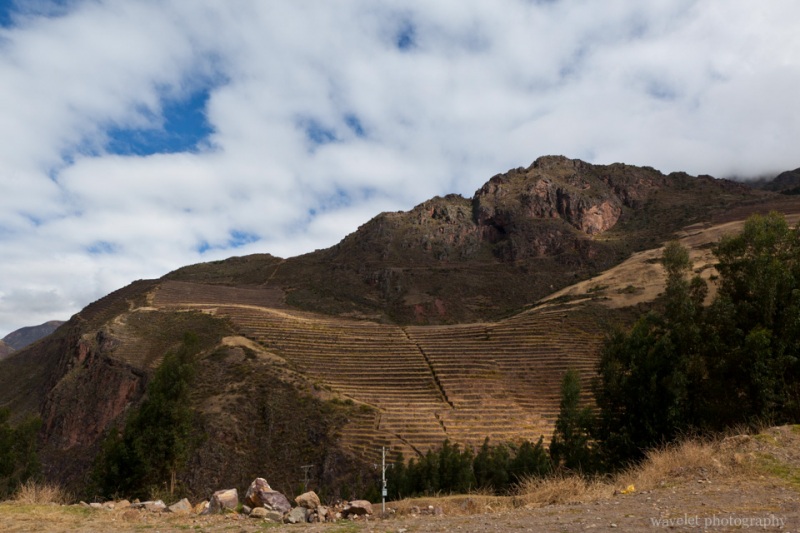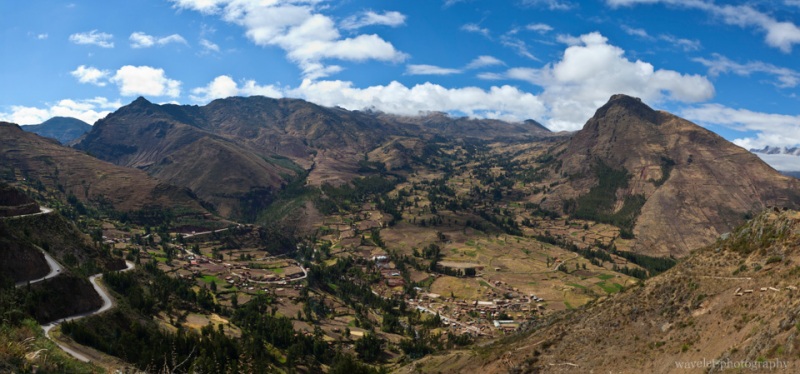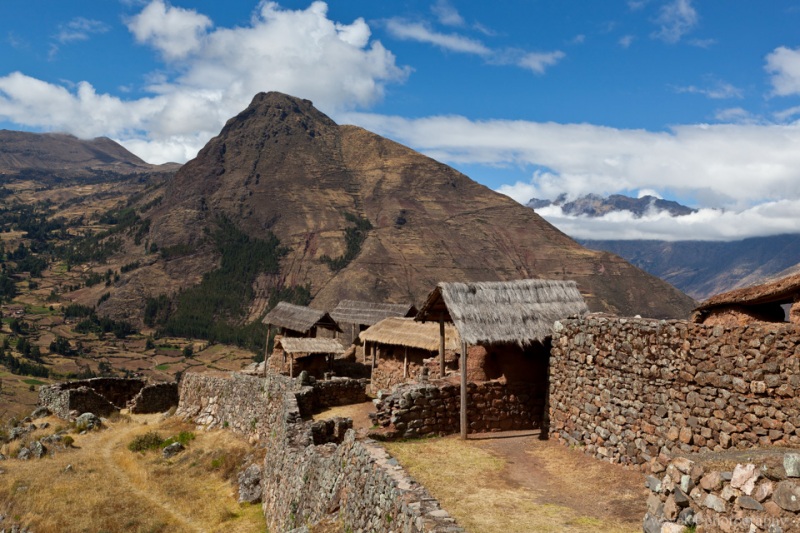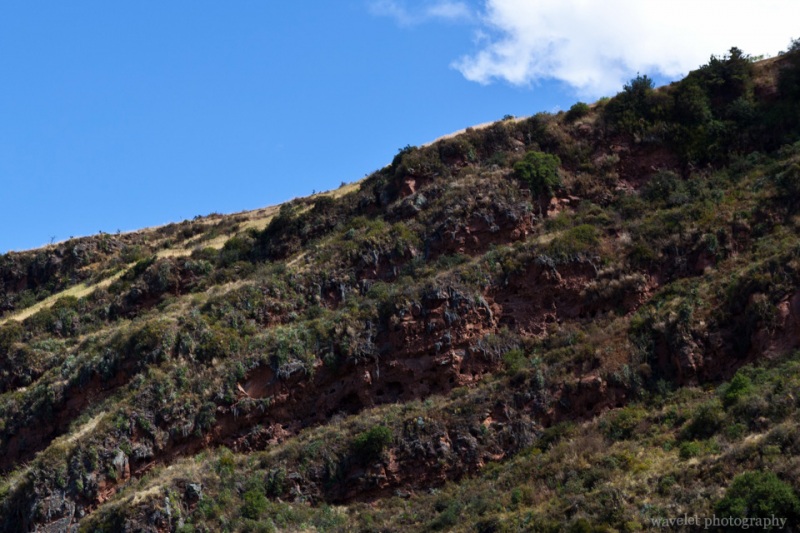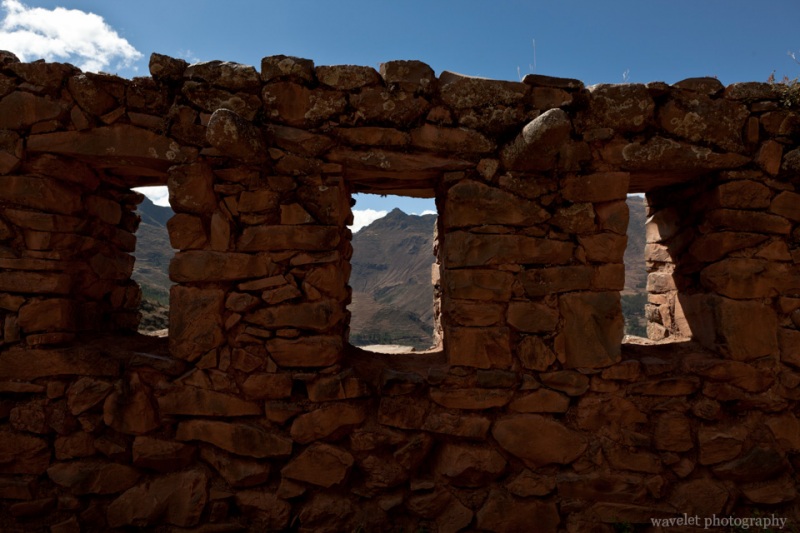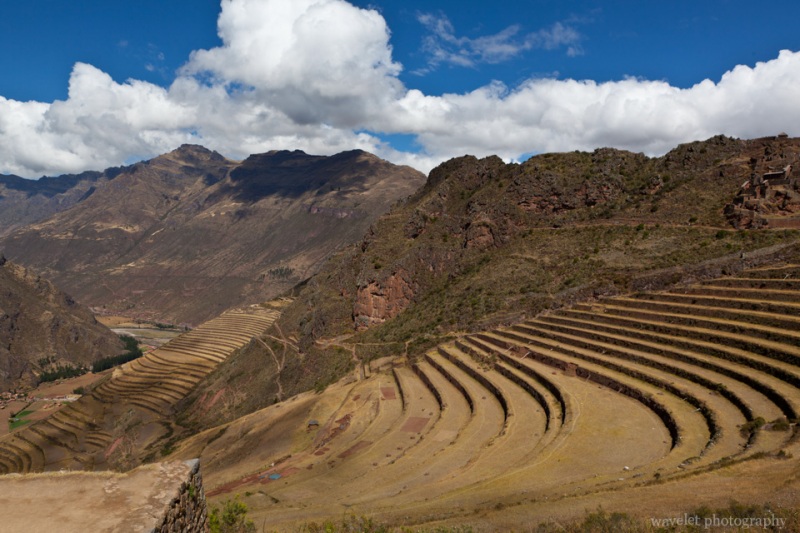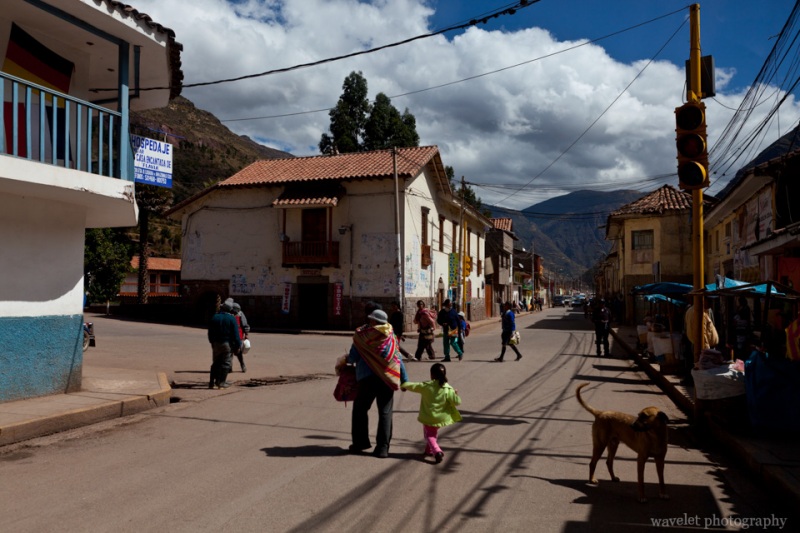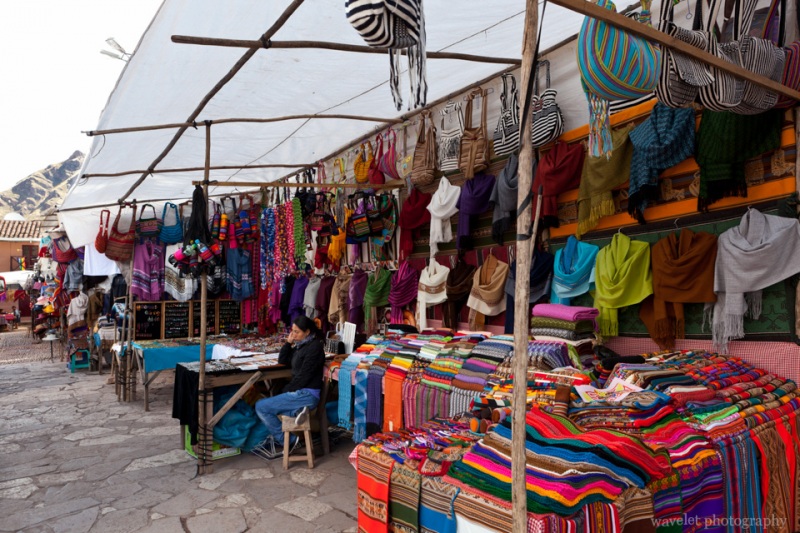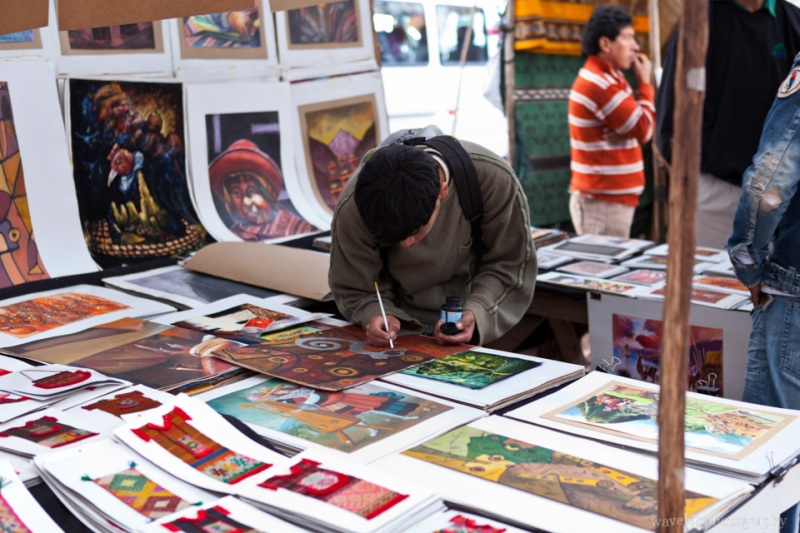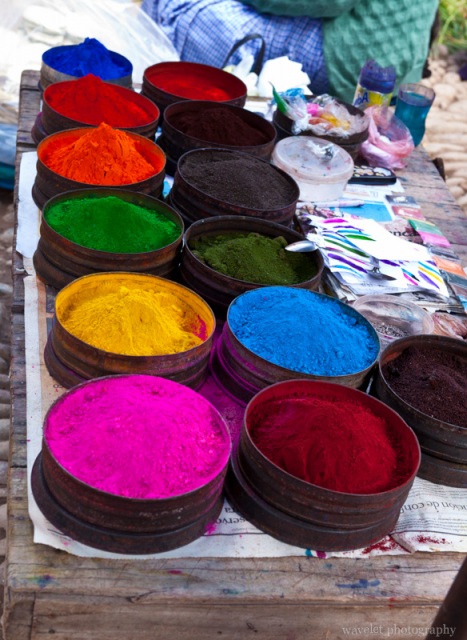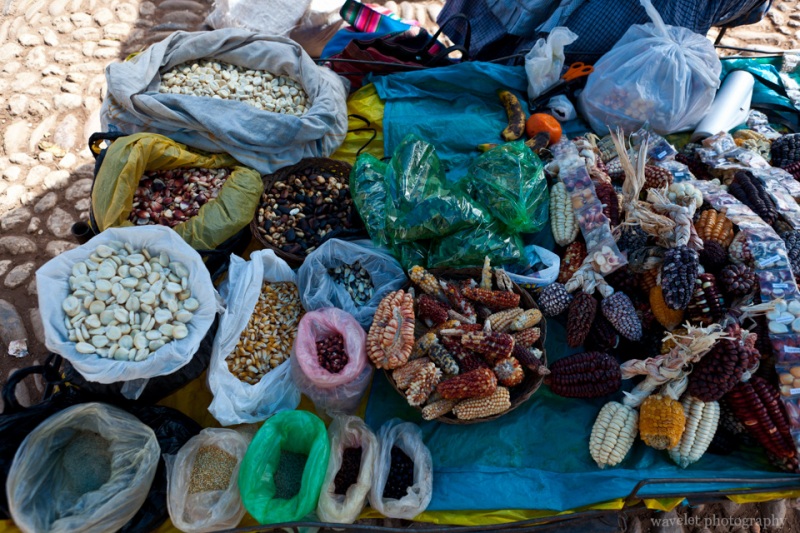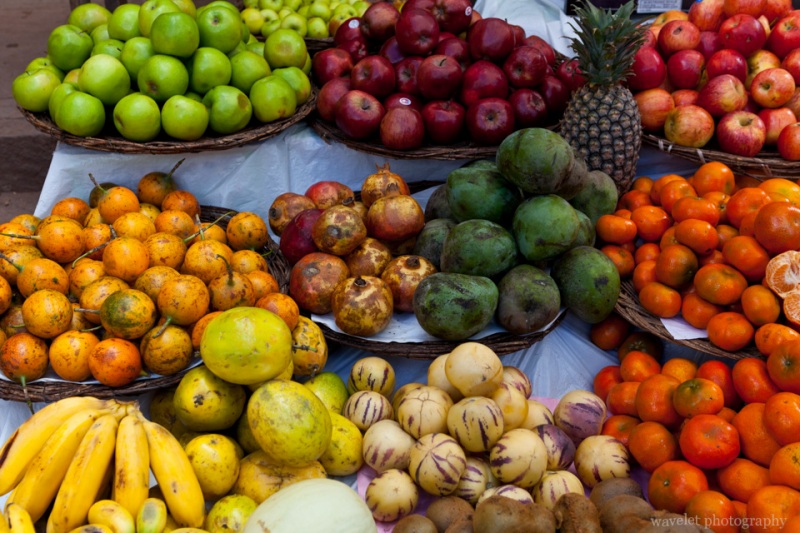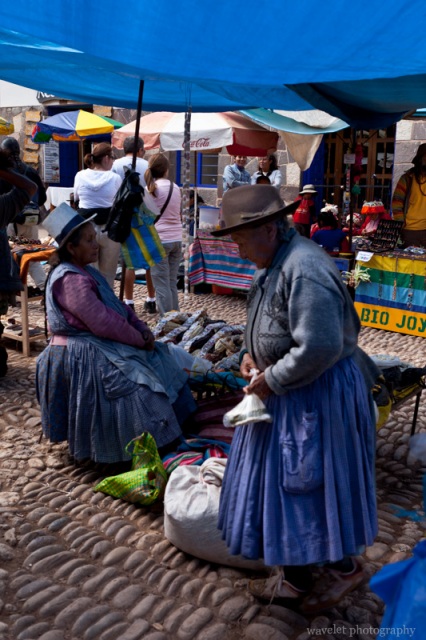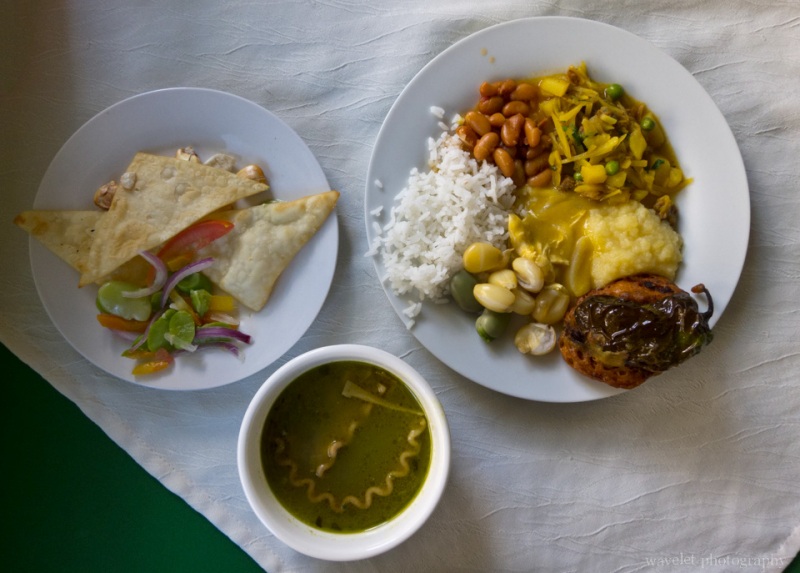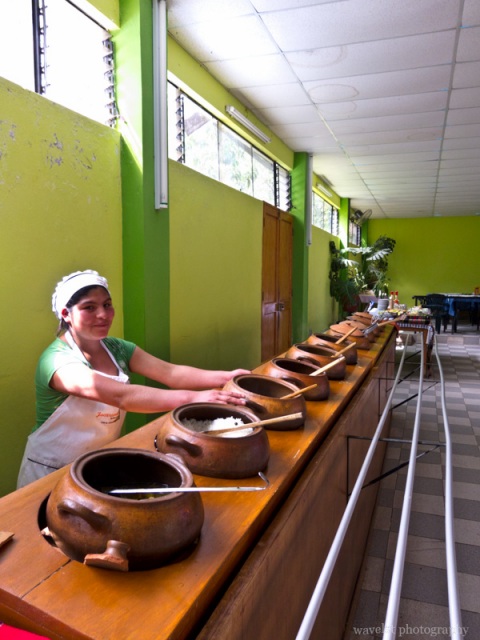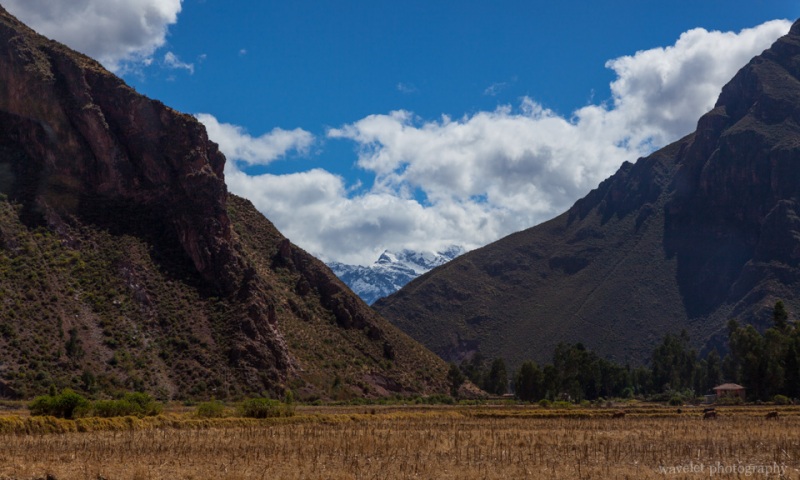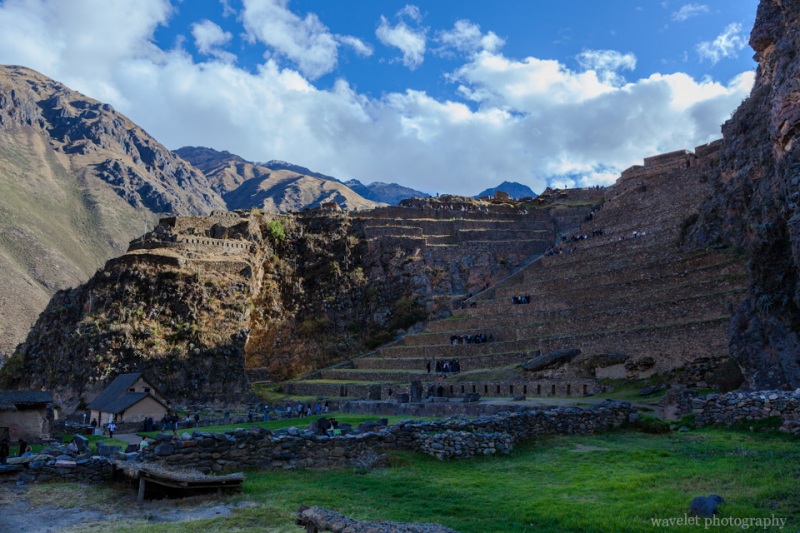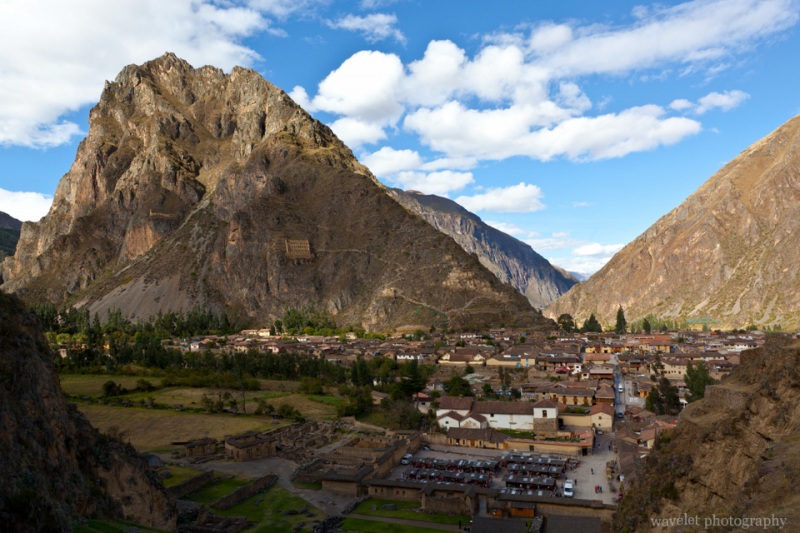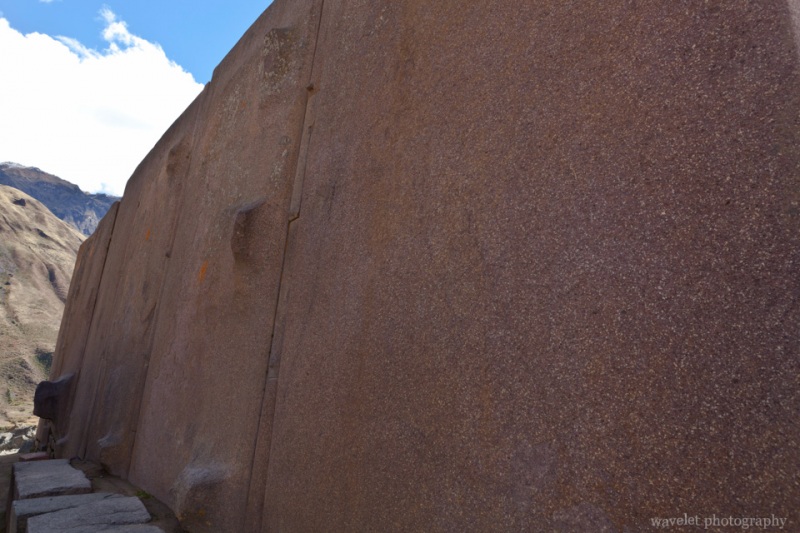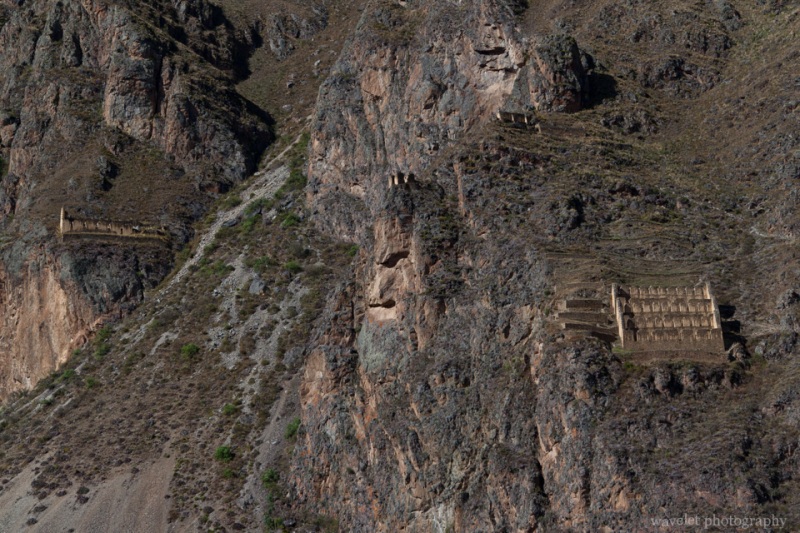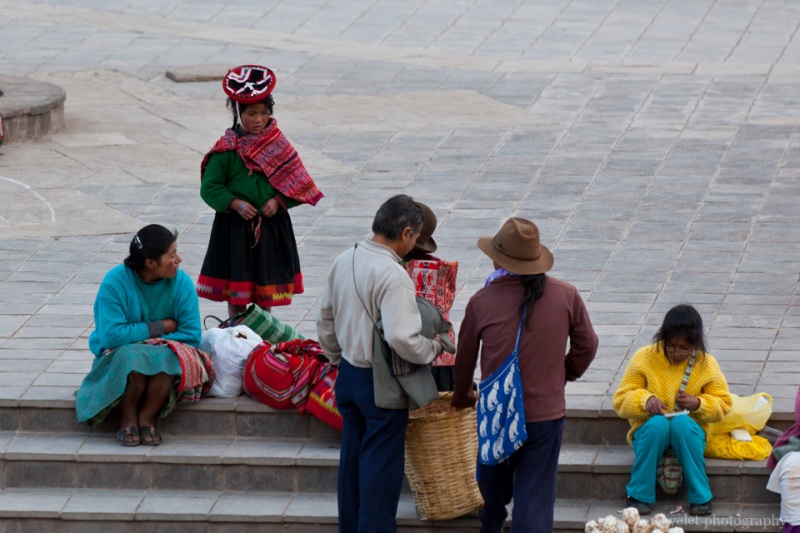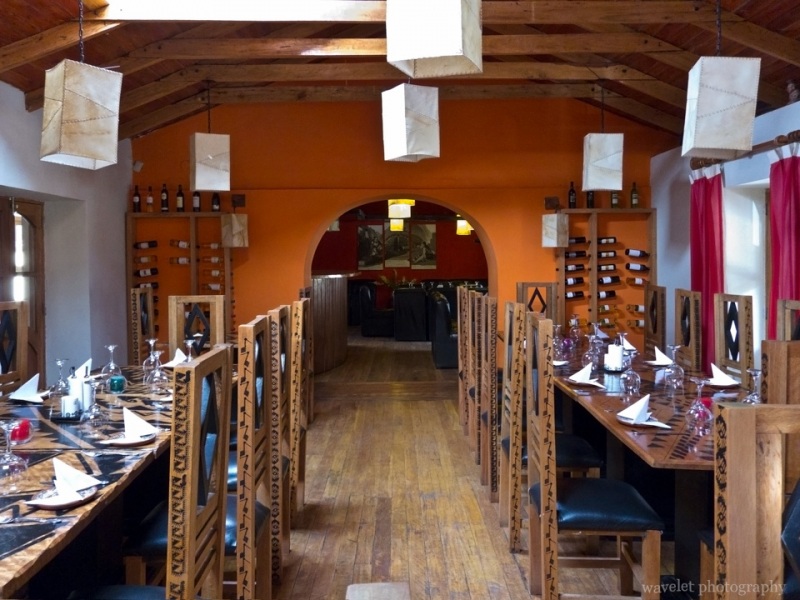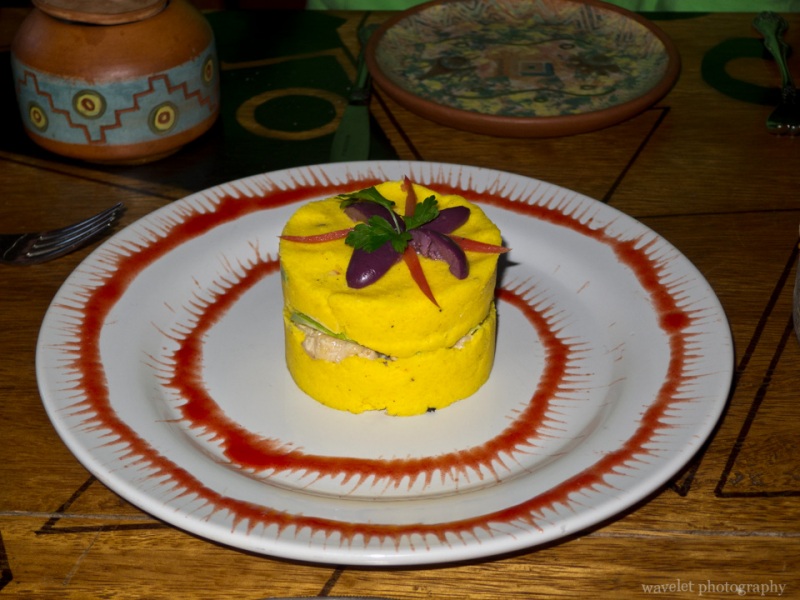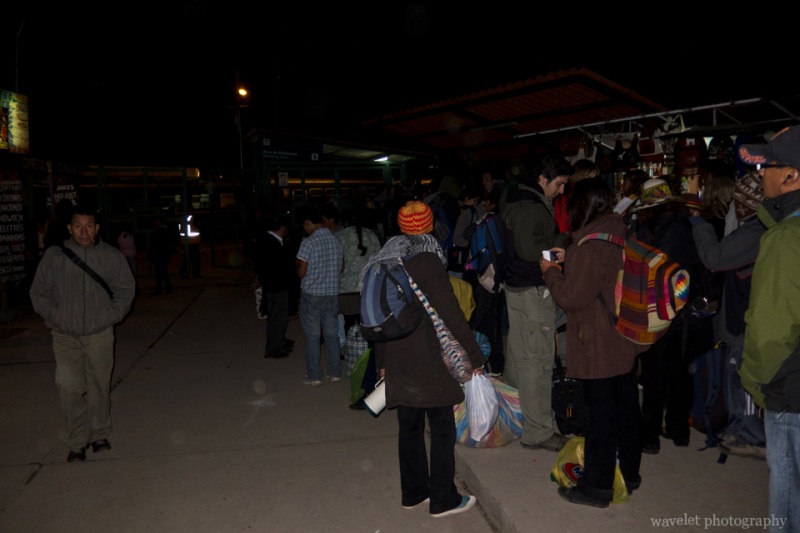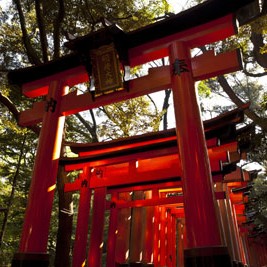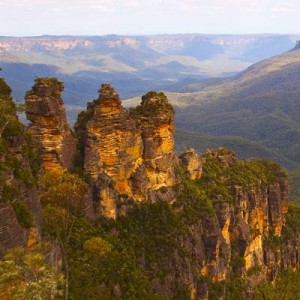2011.7.5Sacred Valley is a valley along the Urubamba River close to Cusco. It is generally considered to include the area between Pisac and Ollantaytambo. Its mild climate and fertile soil made it the key settlement area, the heartland, of Incas. Through the valley, Incas could access to the Amazon plains and trade agricultural products with jungle tribes. At the time when Spanish invaded the Empire, Incas retreated to the valley for protection.
Peru
Peru
Peru
Peru
Many tour companies at Cusco provide Sacred Valley one-day tour to stop at several Inca ruins and markets. We booked the group tour through Llama Path for $20 per person. At 8am, We were picked up in their office next to Plaza de Armas. Before we set off, several people in our minivan joined the Spanish speaking tour in a large tour bus, what left were just two of us plus another American family of 3 persons. It’s almost like a private tour for us.
Out of the Cusco city and passed several rural villages, our first stop was a small market. We bought a Peruvian hat and a pair of gloves. It turned out to be quite useful the next day while I was waiting for the sunrise at Machu Picchu.
Before going to the tour, I had been thinking Sacred Valley as a place that you have to go but nothing exciting, however, when I saw the valley with my own eyes, I was truly impressed by the beautiful and majestic landscapes.
Písac is the first major ruin we visited during the tour. Renowned for its large scale terraces, Písac is commonly believed to be the southern gate of Sacred Valley; thousands of mummies have been found on the cliffs at the back of the ruin; and houses on top of the hill were used for rituals and storing crops – at the Inca time, Písac served at least agricultural, religious and military purposes.
The market in Písac village is another tourist attraction. Besides clothes, what is more interesting are the farmer’s market and art stands.
We stopped at a roadside restaurant, named Jacaranda, for lunch near Calca. The buffet was delicious for 20 sol per person and the garden was decent too.
As we went along the Urubamba River, the elevation kept decreasing. For about another hour, we arrived at Ollantaytambo, which is 2,000 feet (600m) lower than Cusco.
Ollantaytambo was built in 15th century by Inca emperor Pachacuti, who is considered as the most powerful Inca. Under his reign, the Empire’s territory was greatly expanded, several major sites, including Cusco, Sacsayhuamán and Ollantaytambo, were constructed and rebuilt. Ollantaytambo was not only a palace for Inca nobility, but also a fortress that protected the northern entrance of Sacred Valley. After Spanish took over Cusco, Ollantaytambo became the temporary capital of Inca resistance.
Incas developed extensive network of roads to connect the empire. The most famous one, Inca Trail, starts from Ollantaytambo. It takes 3 day and 4 nights hike to reach the lost city, Machu Picchu. Hiking the Inca Trail is considered to be one of the life-time achievements. As more tour companies offer the guide service, it is doable today for most of people. Our plan was to take Perurail’s train from here to Machu Picchu in 2 hours, so we had to skip the rest of Sacred Valley tour. Our train was at 7pm and now it was only 4pm. We started wandering around Ollantaytambo’s plaza and market.
It’s getting cold quickly when the Sun is getting low. We sit in a restaurant called Panaka Grill at the corner of the plaza and spent more than 2 hours there. Its ambiance is way better than other places but the food was too Americanized. Too much cheese on the Pizza.
It only took 15 minutes to walked to the train station. There were many people waiting at the gate already. We took the Expedition (Backpacker) Train, which is the cheapest option, to Machu Picchu. It was in fact very clean and comfortable. Water and snacks were also provided. I noticed Perurail let the local passengers in first to take other carriages. I guess it would be less nice but much cheaper.
